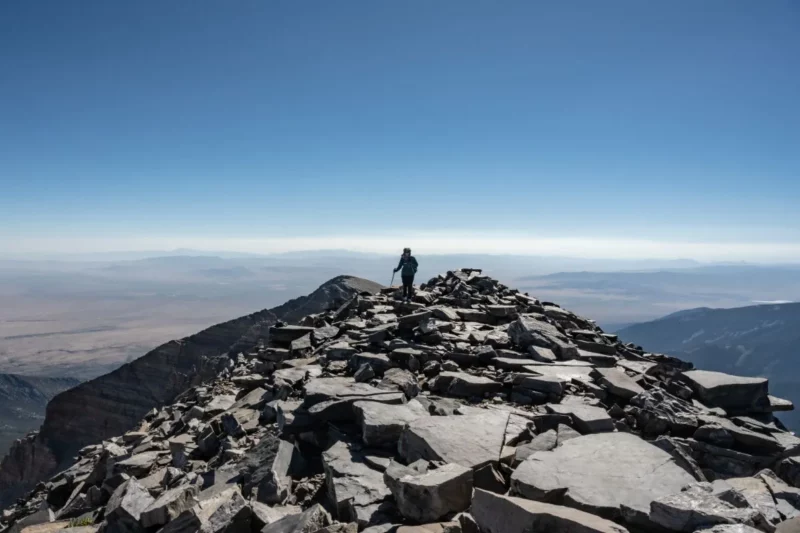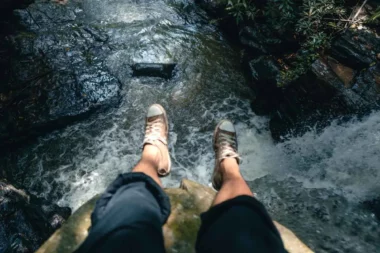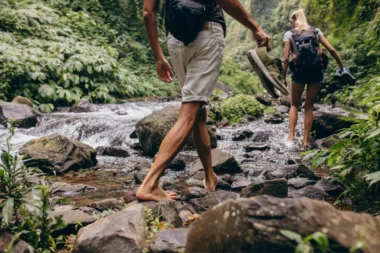Table of Contents Show
The Southwestern United States is home to a vast desert and stunning landscape. It’s no surprise then that places like the Grand Canyon or the New Mexico mountains are a big draw for travelers every year.
In this article, we will focus primarily on the landscape of New Mexico and the unique offerings of its mountainous terrain. Before we narrow down to the specific places you need to visit, let’s learn a little more about New Mexico’s landscape.
How Many Mountains Are in New Mexico?
If you have never visited New Mexico, you may imagine a flat state covered in sand. However, New Mexico has one of the most varied terrains of any state in the country.
You’ll find 88 named mountain ranges either fully or partially located within the state lines. You’ll find desert scapes, forests, waterfalls, and more within these ranges.
What Is the Tallest Mountain in New Mexico?
The tallest mountain in New Mexico is Wheeler Peak. It stands at a stunning 13,167 feet and is part of the Taos Mountain range. Wheeler Peak’s height is impressive, but it barely claims its title as it is only 99 feet taller than Truchas Peak (13,108 feet).

Big Costilla Peak, standing 12,930 feet high, and Venado Peak at 12,739 follow quickly behind as two of the tallest natural points in the New Mexico mountain ranges.
Do New Mexico Mountains Have Good Hiking Trails?
New Mexico is a great place to go hiking. The varied trails nestled within the New Mexico mountains are perfect for adventurous hikers. Perhaps the most notable trail is Williams Lake Trail to Wheeler Peak.
The trail is 8.5 miles long and takes about five and a half hours to complete. Many consider this one of the toughest hikes in the state. If you want to go hiking on your New Mexico trip, research the trails to see which might fit best.
Can You Ski in New Mexico?
Surprisingly, New Mexico is a popular destination for skiers. Several winter resorts make their home in the New Mexico mountains and enjoy a heavily trafficked winter season from early December to mid-March.
Though the winter season is a bit shorter than in other states, the Land of Enchantment is still an excellent destination for winter-sport activities. You can find ski resorts in Taos, Santa Fe, Ruidoso, and many other locations.
Feast Your Eyes on These Unique New Mexico Mountains
Now that we know more about New Mexico’s varied landscapes, let’s dive into which mountains are must-see locations. With the various options, you may just find several mountains that might entice you to make New Mexico your next destination.
Sacramento Mountains
Location: Otero County, NM
Height: 9,695 feet

The Sacramento Mountains are located in the south-central section of New Mexico and extend 85 miles across the state. This limestone mountain range contains gypsum deposits that help make up a large portion of the White Sands National Park.
Within the range, you can find the Sunspot Solar Observatory, an astronomical observatory dedicated to studying the sun. The nearest town to this range is Alamogordo, a small city that can trace its origins back 11,000 years.
Organ Needle
Location: Organ Mountains, Doña Ana County, NM
Height: 9,012 feet

The Organ Needle is the tallest point in the Organ Mountain range. It is located only 4mi from the White Sands Missile Range, a military testing site that has been in use since the 1940s.
If you want to spend time hiking or mountain climbing, Organ Needle may pose a bit of a challenge. Many consider it one of the toughest mountains to climb. Unless you have an expert guide, you may want to find another mountain to traverse.
Mount Taylor
Location: Cibola County, NM
Height: 11,301 feet

Mount Taylor is a unique one on this list as it is a dormant stratovolcano. It is the highest peak in the San Mateo Mountains, located in the northwestern part of New Mexico.
Originally named Tsoodził by the Navajo, it was renamed in 1849 for the then-president Zachary Taylor. The Navajo people consider it a sacred place as it marks the southern border of Dinetah or the Navajo homeland.
Today, Mount Taylor is the site of the Mount Taylor Winter Quadrathlon, an event that includes bicycling, running, cross-country skiing, and snowshoeing over a span of 43 miles.
Shiprock
Location: San Juan County, NM
Height: 7,178 ft

This unique mountain stands out on this list as it is technically considered a monadnock, a standalone formation, in the state’s northwest region. The Navajo Nation governs Shiprock, which has the Navajo name of “Tsé Bitʼaʼí,” or “rock with wings.”
Its unique shape and appearance are due to its formation as a remnant of the neck of a once active volcano. Like Mount Taylor, Shiprock holds special religious and cultural significance to the Navajo people.
A popular tale in Navajo lore states that the peak once served as home to the Navajo people as they searched for new land to call their home.
Jemez Mountains
Location: Rio Arriba, Sandoval, and Los Alamos counties, NM
Height: 11,561 feet

These mountains, located in the north-central part of New Mexico in the middle of the Rio Grande rift valley, are home to several Native American tribes. It originally had the name Tsąmpiye’ip’įn in the Tewa language.
Many enjoy rock climbing and the hiking trails that line the basin. This range is great for those looking to enjoy some outdoor activities while admiring the natural beauty of these New Mexico mountains.
Keep in Mind: Start planning your trip to New Mexico and check out the highest rated RV Parks!
Truchas Peak
Location: Rio Arriba and Mora Counties, NM
Height: 13,102 feet

Truchas Peak is the second tallest mountain in New Mexico. It lies in the Sangre de Cristo Mountains, 46 miles northeast of Sante Fe.
One end of the mountain range touches the Carson National Forest. The hike to the top of the mountain takes a couple of days using the Skyline Trail, which leads to Truchas Lake on the south side of the mountain.
Doña Ana Mountains
Location: Doña County, NM
Height: 5,835 feet
The Doña Ana Mountains lie near the city of Las Cruces, NM. In the early 1900s, many thought these mountains were rich in mineral deposits.
While there were several volcanic-epithermal vein deposits within the range, they only produced just over $5,000 worth of material in gold, copper, and silver. Today, the Doña Ana Mountains still produce modest amounts of quartz in several small quarries.
Sandia Crest
Location: Bernalillo County, NM
Height: 10,678 feet

Sandia Crest, a mountain ridge in Bernalillo County, is the highest peak of the Sandia Mountains. It is also located within the Cibola National Forest.
At the top of Sandia Crest is a lookout and souvenir shop for visitors to enjoy the view of the rift valley of the Rio Grande. It is also home to the Sandia Peak Ski Area.
Zuñi Mountains
Location: Cibola County, NM
Height: 9,256 feet

Several Native American reservations surround the Zuñi Mountains, located in the Cibola National Forest. The highest peak in the range is Mount Sedgwick, standing at 9,256 feet.
The surrounding area, including the base of the range, was a prominent logging and mining location in the early 1900s.
Keep in Mind: Are the New Mexico National Parks worth visiting? Let’s take a look!
Wheeler Peak
Location: Taos County, NM
Height: 13,161 feet

Wheeler Peak is the tallest mountain in New Mexico. It was named after George Wheeler, a researcher who spent several years studying the New Mexico landscape. Taos Ski Valley, a popular village and ski resort, is just a few miles from Wheeler Peak.
The summit’s most popular hiking trail begins in the ski resort’s parking lot. Additionally, several lakes dot the trails and offer stunning views of the surrounding area.
What Makes New Mexico Mountains Unique?
New Mexico mountains are vast and varied and have a lot to offer. Their unique structure, while prominent in the southwestern United States, sets them apart from others within the country.
These mountains also offer a glimpse into the region’s rich Native American history, and recognizing their original names allows for a deeper understanding of their cultural significance.
Additionally, with ample opportunities for skiing, hiking, and admiring the natural beauty of the state, these mountains make the perfect vacation spot for those looking for a more adventurous trip.
If your road leads to the Land of Enchantment, you can find beautiful adventures throughout the state.






